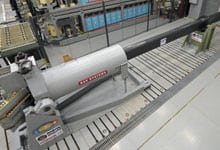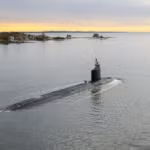
The Navy’s new class of Zumwalt-class (DDG-1000) destroyers would make for a good candidate to deploy the electromagnetic railgun the service is developing to lessen dependence on traditional munitions, Chief of Naval Operations Adm. Jonathan Greenert said Wednesday.The Zumwalts, which are the largest ships built to ever be called a destroyer, already have twice the power generation capacity than required to operate all of the systems going onto the class, meaning there would be plenty of room left to generate…













